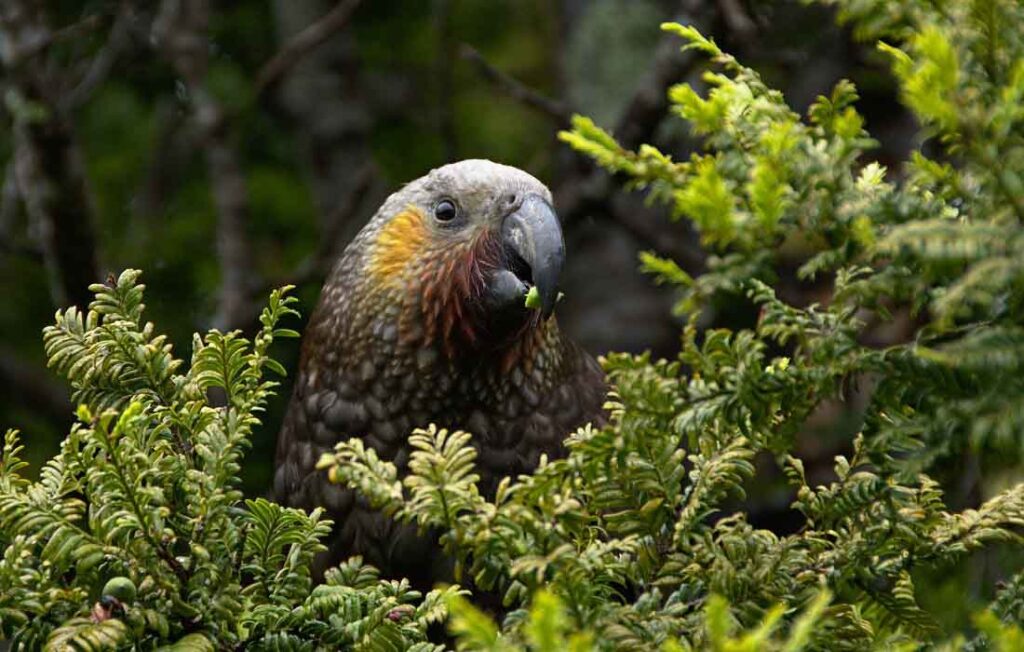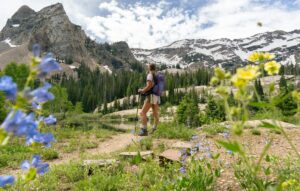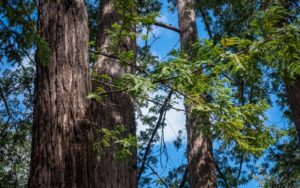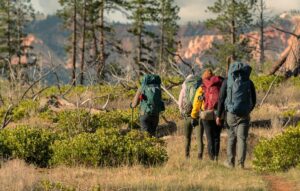Biodiversity is something we humans frequently take for granted. How many times have you found yourself awed at the number of species of fish in the ocean or the numerous types of mosses clinging to the trees in your neighborhood? Chances are, you don’t spend a lot of your day pondering the wonders of the phylum Arthropoda—at least, probably not any more than the next guy. And most of us aren’t particularly knowledgeable about the ins and outs of weeds.
And yet, all of these species (or classifications of species) play an integral role in the world we live in. One that would not easily be made up for should they one day disappear. Even with modern technology, humans don’t have the capacity to make up for all of the species that will be lost if we don’t start fighting for biodiversity right now.
But where do we start? We’ve compiled a list of five of the most common environmental misconceptions involving biodiversity, and we’re disproving them right here and now. PLUS, keep reading to find a list of 12 nonprofit organizations helping to improve plant and wildlife biodiversity around the world.
1. "Planting Trees Is Never Bad"
Planting trees is great, and it can absolutely make a positive difference for the environment, but ONLY IF you’re paying attention to the four key metrics of reforestation: time, location, species, and scale. Focusing your efforts on planting just one species can leave those trees susceptible to disease, infestation, wildfires, and more. Biodiversity is an absolutely critical consideration when it comes to addressing climate change via tree planting, and it’s one that’s often overlooked.
Don’t get us wrong, if you’re a company launching a tree planting initiative, that’s awesome. Go ahead and plant those trees—the world needs more trees! But know that the quality of what you plant matters far more than quantity. Make sure you do your research about where you’re planting the trees. What species are native? What species may need to be avoided in order to preserve the natural ecosystem of the region? What is the region’s biggest natural challenges (e.g., wildfire, flooding, doubt) and what species are best suited to withstand those?
Biodiversity doesn’t make a forest just aesthetically pleasing, it is also critical for the overall health and wellness of the plant life that lives there.
2. "More Is Better"
Biodiversity does not necessarily mean “more” is better; it means diversity and balance are better. After all, simply adding “more animals” to the equation could very easily knock that balance out of whack or introduce invasive species that don’t belong in a given habitat and do major damage to the ecosystem. Focusing all of our attention on saving just one species or encouraging the preservation of just one habitat is not enough. We need to look at the world as one global ecosystem where humans are a very active participant and make our decisions with the whole in mind.
3. “Species Go Extinct All the Time”
While it’s true that some species naturally go extinct over time, human influence is dramatically increasing the number of species at risk and the extreme rate at which they are declining. Human evolution and technology cannot rapidly replace what these species naturally do for their environments. As a result, there are major gaps forming in ecosystems around the world.
And what about species that haven’t been discovered yet? Scientists estimate that there are roughly 5 million more species out there waiting to be identified, both flora and fauna. And we might be killing them faster than we can find them. What potential do these species hold? After all, plants are frequently used to treat both common and uncommon ailments, from malaria to asthma and everything in between.
4. “Conservation Means ‘Excluding People’”
The whole idea of environmental conservation, the reason we’re doing it in the first place, is ultimately for people; so that people can live healthy, fruitful lives. (And not, you know, die because biodiversity loss has led to extreme food insecurity.)
To do this, we must prioritize biodiversity in both plants and wildlife species. This does not mean scientists and conservationists are elevating these species above the wellbeing of people. Rather, it means we need to find and prioritize balance.
5. Individuals Are Responsible for Making the Change
While, yes, people are responsible for their individual choices, and we should all be making responsible (and active) decisions when it comes to recycling, identifying and reducing our plastic consumption, and deciding where we spend our money and what companies we’re willing to support, individuals cannot single-handedly make the systematic changes needed to make big and rapid change happen.
What individuals can do to help is make a lot of noise. We need to come together, educate one another, and make our voices heard; whether it’s at the governmental level or, often even more impactfully, with companies you frequently support. Consumer and constituent demand can have a MAJOR impact. Don’t discount the role you can play.
But if that’s not enough, we’ve put together a list of 12 impressive nonprofits that are focused on solving biodiversity issues, be it wildlife or plant life conservation. When you donate to one or more of these organizations, you’re helping make the world a healthier, more diverse place.
Nonprofits You Can Support for Plant Biodiversity
Coral Restoration Foundation (International) – The largest reef restoration organization in the world. Responding to large-scale loss of dominant coral species throughout Florida’s coral reef system by “farming” and “outplanting” different corals. Has restored more than 17,500 square meters of coral to date.
Florida Native Plant Society (FL, State) – Promotes the preservation, conservation, and restoration of native Florida plant species. Educate residents and visitors about the ecological importance of native plant species. Manage lands housing critical native species. Runs programs on topics like landscaping, citizen science, plant research, and more.
Institute for Applied Ecology (Regional) – Conserving natural habitats through conservation, research, and education. Works with public and private agencies to educate on topics of conservation, ecosystems, and native species. Habitat restoration projects and outreach.
Michigan Nature Association (MI, Local) – Protects regions housing endangered and threatened Michigan plant species. Has natural history study and conservation education programs. Supports sanctuaries across the state.
Xerces Society (National) – Protects invertebrates and their habitats by working with partners such as scientists, land managers, and policymakers by advocating, providing educational materials, and building community for a healthier tomorrow.
Nonprofits You Can Support for Wildlife Biodiversity
African Wildlife Foundation (International) – This Africa-based global conservation organization supports land and wildlife conservation efforts, protecting the astoundingly diverse species that make up Africa. Have people (including tracking dogs) on the ground to defend against traffickers/poachers. Help people and wildlife coexist peacefully.
Big Life Foundation (International) – Protects over 1.6 million acres of wilderness in East Africa. Employs local rangers for land management and defense against traffickers/poachers. Habitat protection, anti-poaching and wildlife crime tracking, predator protection livestock compensation (so people don’t kill the endangered predator to protect their livestock).
Born Free USA (International) – Seeks a co-existent future where humans no longer exploit wild animals. Ensures all animals—in captivity or in the wild—are treated properly. Supports conservation efforts on the ground, in the classroom, and in the halls of Congress.
Illinois Audubon Society (IL, Local) – Promotes the protection and conservation of native Illinois plant and wildlife species. Provides public education about wildlife conservation as well as public programs, resources, and sanctuaries throughout the state.
Oyster Recovery Partnership (MD, Local) – More than 10 billion oysters planted—and counting. Oyster Recovery Partnership (ORP) is bringing oysters back to the Chesapeake Bay as part of a water and ecosystem restoration effort to support the oyster industry as well as the aquatic ecosystem health of the region.
Peregrine Fund (International) – Preventing the extinction of birds of prey by protecting critical habitats, engaging people, young and old, about the benefits of raptor species, and mitigating threats such as habitat loss, contaminants, and invasive species among others.
Wild Salmon Center (International) – Protecting the strongest wild salmon rivers in the North Pacific. Focus on the conservation of wild salmon strongholds to have the most positive environmental impact on river ecosystems.




